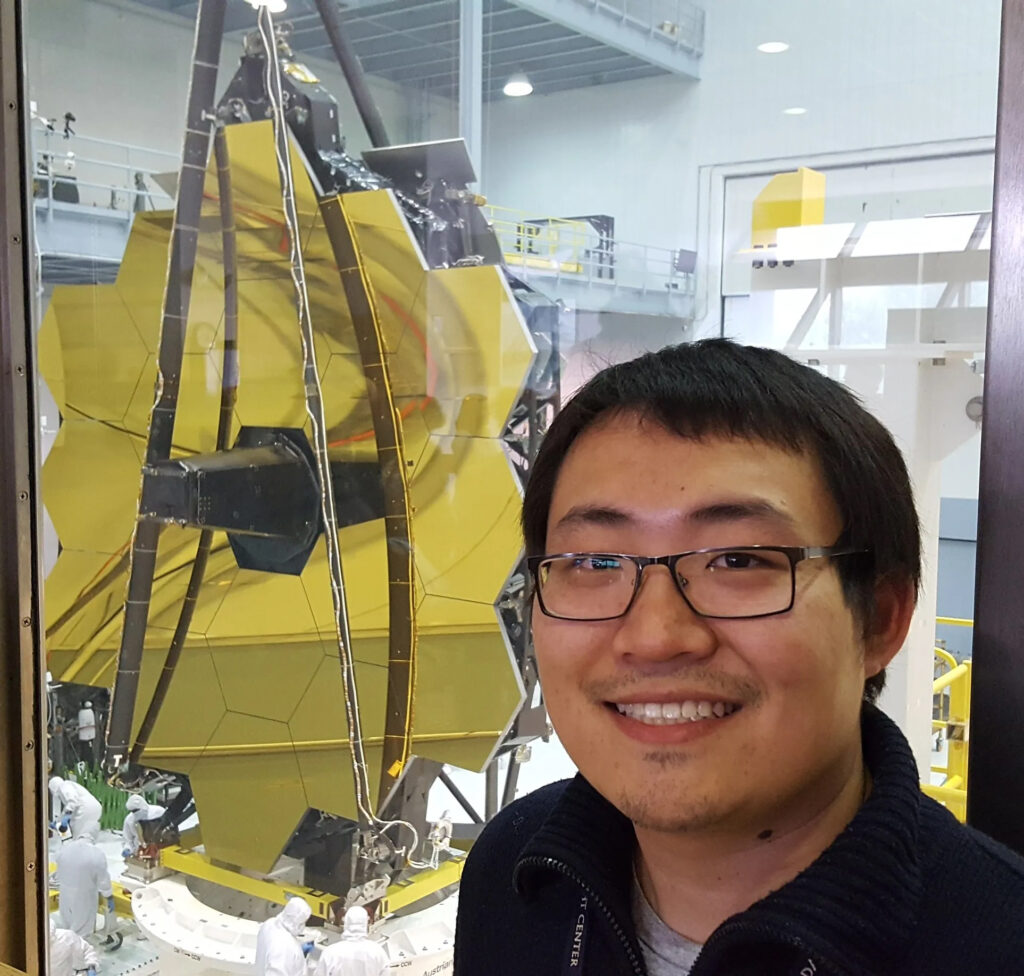Kan Yang Turns Science Concepts into Engineering Reality

As team lead of the Instrument Design Laboratory, Kan Yang turns science concepts into engineering reality.
Name: Kan Yang
Title: Team Lead of the Instrument Design Laboratory
Formal Job Classification: Technical Manager
Organization: Instrument Systems and Technology Division, Engineering and Technology Directorate (Code 550)
What do you do and what is most interesting about your role here at Goddard?
I work with a team of scientists and engineers to design space flight instrument concepts. I love seeing the newest ideas from scientists and having a say in a technical design that matches their scientific vision.
What is your educational background?
In 2008, I got a bachelor’s in science and engineering from the University of Michigan. In 2010, I got a master’s in aerospace engineering from the University of Maryland.
Why did you come to Goddard?
I came to Goddard in 2010 because I always wanted to work for NASA. When I was a kid, I watched documentaries about the Hubble Space Telescope being assembled. I saw the people working in the clean room and wanted to be one of the technicians in clean room suits assembling the telescope. Also, I’ve always been fascinated by astronomy, ever since my parents took me to an observatory at a young age to see Comet Hale-Bopp hanging in the sky.
What are the highlights of your initial thermal work at Goddard?
I started at Goddard as a thermal engineer doing thermal analysis of the Global Precipitation Measurement (GPM) satellite. I moved on to the Lunar Atmosphere and Dust Environment Explorer (LADEE) mission where I analyzed the temperatures of the satellite sitting within the rocket at NASA’s Wallops Flight Facility in Virginia. We launched at the end of summer, which can get hot, so we were concerned about whether the HVAC system could keep the satellite cool enough on the launch pad. After LADEE launched, we noticed a specific instrument heating up more than expected so we had to analyze how to change our operational methods at the Moon to prevent overheating, all while the satellite was already on the way from the Earth to the Moon. This also occurred during the 2013 government shut down: a no-pressure-at-all type of situation!
What was one of your most exciting moments working on the James Webb Space Telescope?
I have spent the bulk of my career working on thermal analyses for the James Webb Space Telescope. For six years, I had one task: to take the “cold” half of the telescope, which contained the large mirrors and sensitive instruments, and figure out how to cool it down to the temperatures it would see in space, about minus 240 degrees Celsius (or about minus 400 degrees Fahrenheit), so that we could test it here on Earth in the conditions it would see in space.
We tested James Webb at NASA’s Johnson Space Center in Houston in the largest thermal vacuum chamber in the world. It is eight stories tall and 55 feet wide. It took about 100 days to execute this test, including cooling it to negative 240 degrees Celsius, doing our optical and thermal check-outs at this temperature, then heating it back to room temperature. During our testing, we were hit by Hurricane Harvey. We rode out the storm for five days, including…
